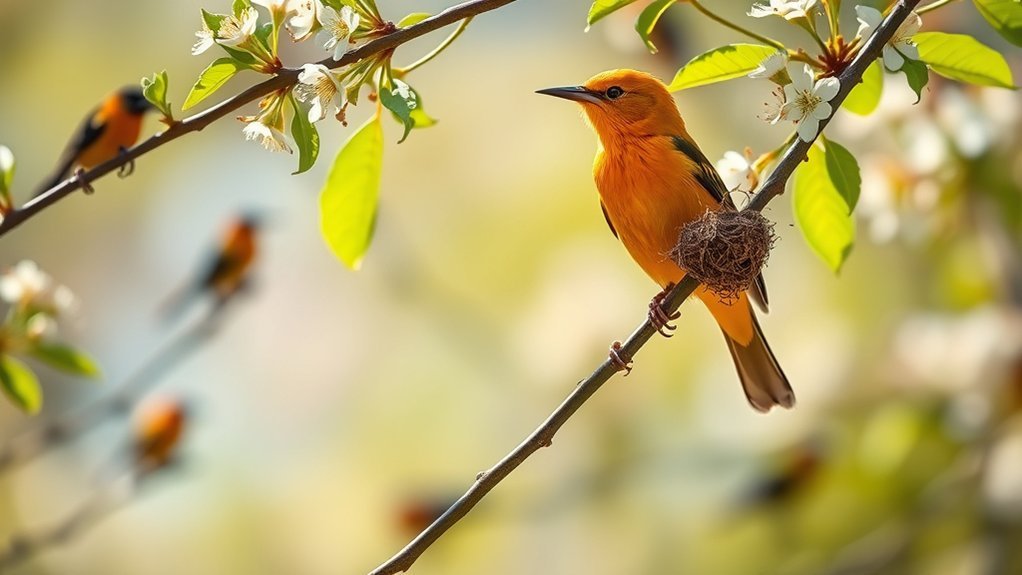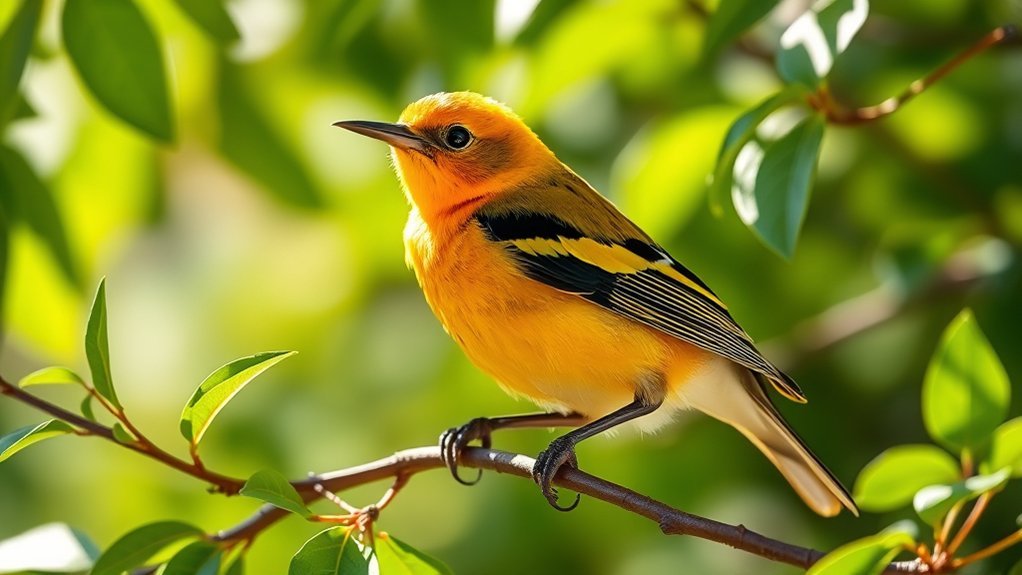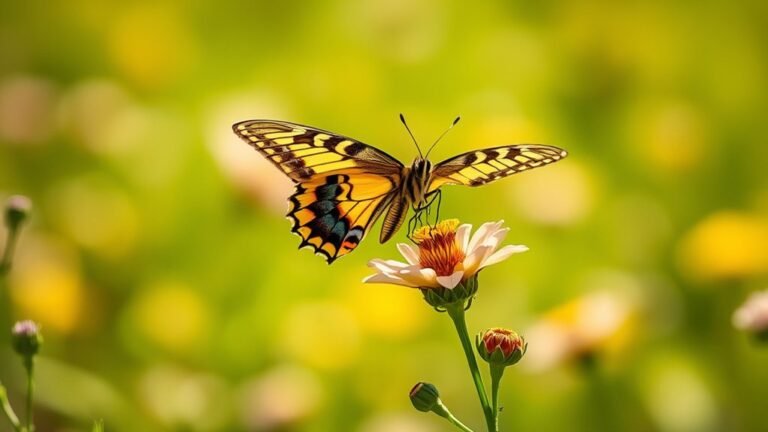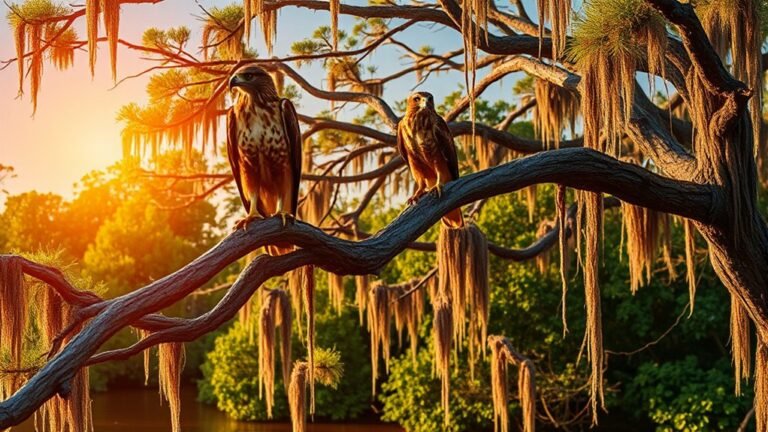Identifying Female Orioles: Key Features
When you look at female orioles, notice their special colors. They usually have a soft mix of olive and yellow. These colors help them blend in with the leaves around them.
Female orioles are slim and measure about 7 to 9 inches long. This shape helps them fly quickly and smoothly. You can spot their unique markings, too. They have delicate streaks on their chests and light white bars on their wings. These features make them look pretty and help them stay safe from predators.
Female orioles are interesting birds with a lot to offer. Pay attention to their beauty and how they move in nature!
A Quick Overview
Female orioles are beautiful birds with soft olive and yellow colors. These colors help them blend in with their surroundings, making it hard for predators to see them.
They are usually smaller than male orioles, measuring between 7 to 9 inches long. This smaller size gives them a delicate look.
Their feathers have unique patterns, with light streaks on their wings and gentle markings. These features not only make them pretty but also help them hide from danger.
You can see dark lines around their eyes that add to their pretty faces and make them stand out.
Sometimes, their colors can change with the seasons. In mating season, their colors may become brighter to attract mates. This helps them survive and thrive in their environment.
Overview of Female Orioles

When you look at female orioles, you'll see they've a few special traits that make them different from male orioles.
Female orioles usually have softer colors. Their feathers are often a mix of olive and yellow, making it easier for them to hide in nature. Their bellies are lighter, sometimes almost beige, giving them extra camouflage. They're also a bit smaller than males, which makes them look more delicate.
During migration, female orioles often fly the same paths as the males. They usually move in pairs or small family groups.
Female orioles like to live in a variety of places, such as open woods and the edges of neighborhoods. This helps them connect well with their surroundings.
By learning about these features of female orioles, you can gain a better understanding of their role in nature. Plus, it can help you feel more connected to the community of people who enjoy watching birds.
Plumage Coloration and Patterns
Female orioles have beautiful colors, even if they're less bright than males. Their feathers show soft yellow and brown shades that help them hide from predators. This camouflage is especially important when they're nesting.
As the seasons change, you might notice little differences in their feathers. Sometimes they look duller, or their colors can warm up because of the weather.
You can also spot light streaks on their wings. These patterns are interesting but still help them stay unnoticed.
Learning about female orioles helps you appreciate their beauty and understand how they fit into nature.
Size and Body Shape

Female orioles have a small and slim body, typically around 7 to 9 inches long. This shape helps them fly really well.
When you watch a female oriole flying, you can see how her long wings and slightly longer tail help her move quickly and change direction easily as she jumps from branch to branch.
Her narrow body makes it easier for her to fly through thick trees. This ability is important for finding food and escaping from predators.
Distinctive Markings and Features
Female orioles have unique markings that make them stand out from other birds. Their soft yellow or olive-brown feathers help them blend in with leaves. During mating season, their colors can get brighter because of changes in their hormones.
Look for their delicate streaks on the chest and gray wings with faint white bars. These features add to their beauty.
You can also see interesting patterns on their faces, like dark lines around their eyes.
As you watch them during migration, keep an eye out for these traits. They can change a bit depending on where they are. Knowing these details will help you appreciate these lovely birds even more and make your birdwatching more fun.
Behavior and Habits

When you watch female orioles in nature, you see some cool things about how they act and survive. Here are some interesting habits of these birds:
- Eating Habits: Female orioles have different ways to find food. They sip sweet nectar from flowers and catch insects quickly.
- Nesting: They build nests very well. These nests hang from tree branches and are made from grass, yarn, and plant fibers to keep them strong.
- Socializing: Female orioles like to gather with other birds to eat together. This helps them stay safe and find more food.
- Protecting Their Space: Females work hard to protect their nesting areas. They want to make sure it's safe for their babies to grow up.
Watching these birds can teach us a lot about being smart and strong in nature!
Vocalizations and Calls
The sweet songs of orioles fill the air, making gardens and woods come alive.
Female orioles have special singing styles. Their songs are often softer and flow smoother than those of male orioles. Male orioles make loud calls to claim their territory.
In contrast, females sing gentle tunes, which can sound like a series of whistles. These sounds help them communicate and show they belong in their chosen spaces.
When you pay attention to these calls, you can better appreciate these beautiful birds and connect more with nature around you.
Comparing Female Orioles to Other Birds
Female orioles are special birds. Their soft songs make them stand out among all birds. Let's look at how they differ from other birds.
- Color: Female orioles are mostly yellow and brown. This is different from warblers, which have bright, flashy colors.
- Nests: Female orioles build homes that hang from tree branches. They weave these nests carefully. Other birds, like finches, build different kinds of nests.
- Songs: The songs of female orioles are gentle and sweet. Compared to sparrows, their music sounds softer and nicer.
- Habitats: Female orioles like to live in open woods and orchards. Many other birds feel happier in thicker forests.
These unique traits show how female orioles fit into a wide range of bird life. They add beauty and sound to our environment.
Frequently Asked Questions
What Habitats Do Female Orioles Prefer for Nesting?
Female orioles like to build their nests in deciduous trees, especially willows and oaks. They choose spots with lots of leaves and close to water. This helps keep their young safe and provides plenty of food. By nesting in these areas, orioles have the best chance for their babies to grow strong and healthy.
How Long Do Female Orioles Typically Live?
Female orioles usually live about 3 to 5 years. Their life can be shorter or longer depending on things like predators and food. The places they live and changes in the weather also play a big part in how long they can survive.
Just like us, they need good homes and enough food to stay healthy. So, the better their environment, the better their chances of living longer.
Are Female Orioles Migratory or Sedentary Birds?
Female orioles are migratory birds. They travel long distances between their breeding and wintering homes. This journey shows how strong their instincts are and how they adapt to different environments. Watching them migrate is a beautiful experience, reminding us of nature's wonders.
What Do Female Orioles Eat During Different Seasons?
Female orioles have different diets in each season. They eat nectar, fruits, and insects to stay healthy.
In spring, they like to eat protein-rich insects. This helps them gain strength after the long winter.
Summer comes, and they switch to eating fruits. They enjoy sweet fruits that are easy to find.
When autumn arrives, they focus on berries. These tasty treats give them energy for the colder months ahead.
How Do Female Orioles Care for Their Young?
Female orioles take great care of their young. They build strong nests using grass and twigs. When the baby birds hatch, the mothers work hard to feed them. They bring back small insects for their meals. They also keep the nest warm to help the baby birds grow healthy. This care creates a safe home for their little ones to thrive.

Luna is the passionate founder and author of Birds and You, a website dedicated to sharing her love for birds with fellow enthusiasts. Through her engaging articles and guides, she aims to educate and inspire others to explore the fascinating world of birds. When she’s not writing, you can find Luna observing birds in their natural habitats or sharing beautiful bird photography on Pinterest. Join her on this journey to celebrate and protect our feathered friends!







